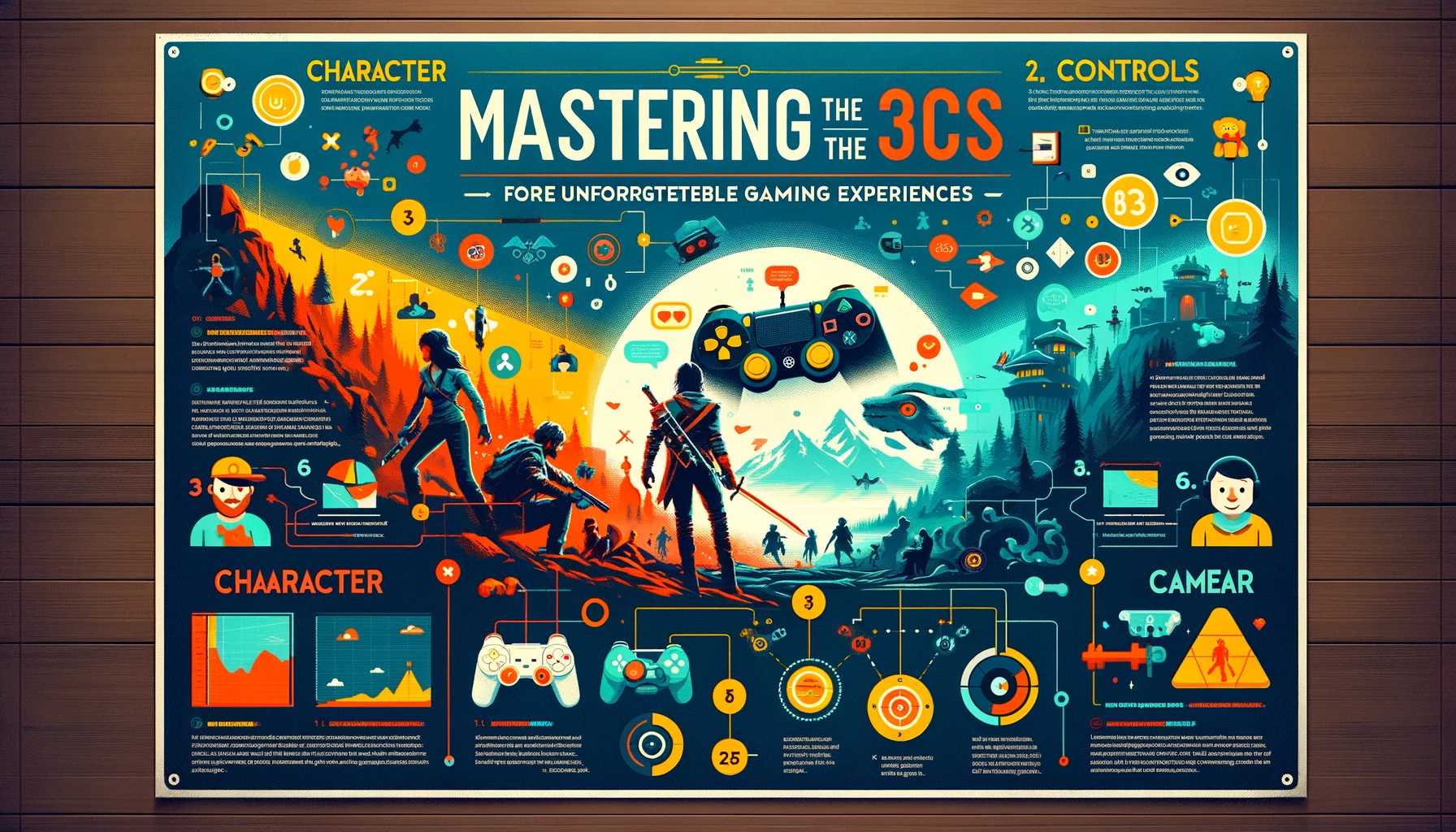The world of game development is a symphony of interconnected elements. From intricate storylines to stunning visuals, every detail plays a role in crafting an immersive experience. However, there's a powerful trinity that forms the foundation of any great game: Character, Controls, and Camera – the holy trinity, or as it's affectionately known, the 3Cs.
Character: The Heartbeat of the Game
They say a hero is only as good as their journey. In the realm of games, the character is the vessel through which players navigate the world and engage with the story. A well-designed character breathes life into the experience:
Relatable or Engaging: Characters don't need to be universally beloved, but they need to be compelling. Whether it's the stoic determination of a lone warrior or the quirky charm of a mischievous sidekick, players need a reason to care about the character's journey.
Abilities and Progression: A character's skillset and growth potential are crucial. Mastering new abilities and witnessing the character's evolution keeps players invested and motivated.
Connection and Agency: The best characters feel like extensions of ourselves. Responsive controls and a sense of agency over their actions foster a deeper connection between player and character.
Controls: The Seamless Link Between Player and Character
Imagine trying to navigate a bustling city with a broken joystick. Frustrating, right? Controls are the bridge between the player's intentions and the character's actions. Here's why they matter:
Intuition and Fluidity: Great controls feel natural and intuitive. Players shouldn't have to constantly wrestle with clunky mechanics to achieve their desired actions.
Precision and Responsiveness: Whether it's aiming a weapon or executing a complex combo, control responsiveness is crucial. Every action should feel deliberate and seamlessly translate from player input to on-screen movement.
Customization and Accessibility: Not everyone has the same gaming preferences. Offering control customization options caters to diverse players and promotes accessibility.
Camera: The Window to the World
The camera acts as our eyes and ears in the game world. It frames the action, dictates the pacing, and shapes how we experience the environment:
Strategic Framing: A good camera angles the world in a way that enhances gameplay and storytelling. It should guide the player's attention to key elements while maintaining a sense of awareness of the surroundings.
Dynamic and Responsive: The camera shouldn't be a static observer. It can zoom in for intense combat moments, pan across vast landscapes, or subtly adjust to convey emotions.
Player Agency: In some cases, offering limited camera control can empower players, allowing them to explore the world from different perspectives.
The 3Cs: A Dance of Harmony
The true magic unfolds when these three elements work together in perfect harmony. Imagine a character with a captivating backstory, paired with intuitive controls that translate every button press into precise actions. All of this is accentuated by a dynamic camera that keeps the action engaging and visually stunning. This is where the 3Cs create an experience that transcends mere gameplay; it becomes an immersive journey.
Beyond the Basics: The 3Cs in Action
Let's explore some real-world examples of how the 3Cs come together:
The Platform Challenge: In a classic platformer like Super Mario Bros., responsive controls and a camera that follows Mario closely create a sense of flow during jumps and obstacle courses. Mario's simple yet iconic character design makes him instantly recognizable and relatable.
The Immersive Open World: Open-world games rely heavily on a well-designed camera. In titles like The Legend of Zelda: Breath of the Wild, the camera can zoom out to reveal breathtaking landscapes, then seamlessly adjust to focus on a nearby enemy or a hidden secret. Link's diverse combat abilities and intuitive controls provide players with a wide range of ways to explore the world and overcome challenges.
The Takeaway: A Formula for Unforgettable Games
While graphics and story are important, mastering the 3Cs is what truly elevates a game from good to great. By creating a character players can connect with, offering controls that feel like an extension of themselves, and presenting the world through a dynamic camera, developers forge an unforgettable connection between players and the game world. So, the next time you delve into a new game, pay attention to the intricate dance between character, controls, and camera. You might just discover the secret ingredients that make a truly magical gaming experience.
